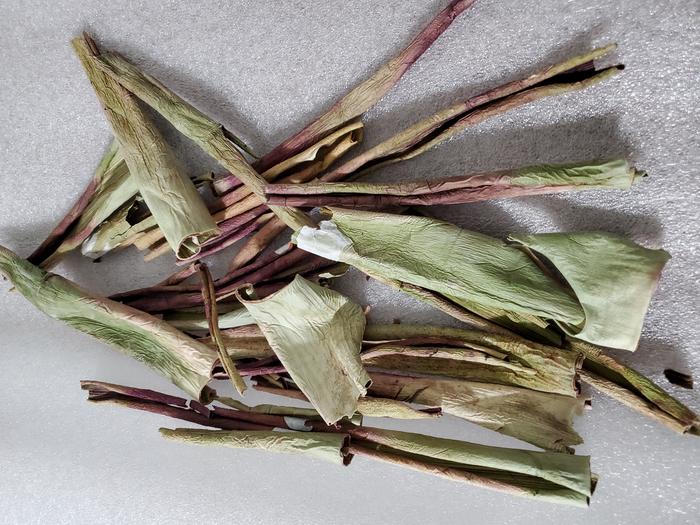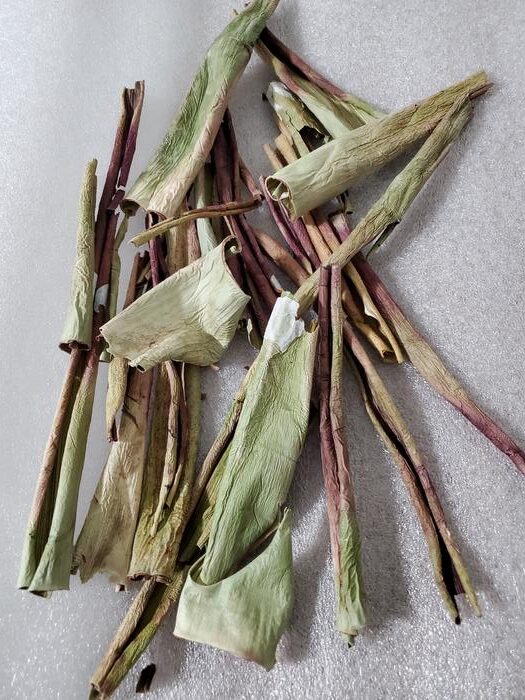SAN FRANCISCO, Aug. 15, 2023 — Aloe barbadensis, commonly known as aloe vera, has been used for thousands of years to treat skin ailments, promote digestive health and heal wounds. But while aloe vera gel is in high demand, the peels are thrown away as agricultural waste. Today, scientists report that these peels, or rinds, can ward off bugs, acting as a natural insecticide. They have identified several bioactive compounds in extracts from the peels that deter insects from feasting on crops.

Credit: Nazmul Huda
SAN FRANCISCO, Aug. 15, 2023 — Aloe barbadensis, commonly known as aloe vera, has been used for thousands of years to treat skin ailments, promote digestive health and heal wounds. But while aloe vera gel is in high demand, the peels are thrown away as agricultural waste. Today, scientists report that these peels, or rinds, can ward off bugs, acting as a natural insecticide. They have identified several bioactive compounds in extracts from the peels that deter insects from feasting on crops.
The researchers will present their results at the fall meeting of the American Chemical Society (ACS). ACS Fall 2023 is a hybrid meeting being held virtually and in-person Aug. 13–17, and features about 12,000 presentations on a wide range of science topics.
A video on the research is available at www.acs.org/AloePeel.
“It’s likely that millions of tons of aloe peels are disposed of globally every year,” says Debasish Bandyopadhyay, Ph.D., the project’s principal investigator. “We wanted to find a way to add value and make them useful.”
Bandyopadhyay first became interested in the potential use of aloe rinds as an insecticide when he and a colleague visited a local aloe vera production center, where he noticed that insects had left the aloe leaves alone, despite attacking the leaves of other plants. He asked the CEO of the company if he could take the rinds back to his lab — a request that confused the CEO, who initially tried to send Bandyopadhyay home with samples of the company’s products instead.
Some home gardeners have begun to use aloe gel as an ingredient in a natural pesticide mixture, along with onions and garlic, but these recipes don’t always include the peels. And currently, on a larger, industrial scale, aloe peels are treated as agricultural waste and largely used to create biomass, which can help improve soil quality at aloe farms. The main downside of this approach is that rotting agricultural waste can release methane and other greenhouse gases into the atmosphere, contributing to global climate change.
So Bandyopadhyay set out to explore the possibility of recycling the peels to develop a natural pesticide that, on its own, could help farmers in areas where insects can be a major threat, such as regions of Africa, the tropical and subtropical regions of the Americas, and the maize and millet fields in India. The new application as a pesticide could also provide an environmentally friendly alternative for disposing of the peels and create additional revenue streams for aloe vera producers. “The goal is to recycle this waste in a meaningful way while making aloe production greener and more sustainable,” says Bandyopadhyay.
To investigate the potential insecticidal properties of the aloe vera peels, Bandyopadhyay and colleagues from the University of Texas Rio Grande Valley first dried out the peels. To keep the bioactivity of the plant unaltered, the rinds were dried in the dark at room temperature by blowing air over them. The researchers then produced various extracts from the peels with hexane, dichloromethane (DCM), methanol and water. The team previously reported that the hexane extract contained octacosane, a compound with known mosquitocidal properties.
In new experiments, the DCM extract showed much higher insecticidal activity against agricultural pests than the hexane extract, so the researchers wanted to analyze it further. The DCM extract was chemically profiled using high-performance liquid chromatography-mass spectrometry, a technique that allows researchers to identify compounds.
With these data, the research team identified over 20 compounds in the aloe vera rinds, many of which had antibacterial, antifungal or other potential health benefits — unsurprising, given aloe’s history as a folk medicine. However, among these were six compounds, including octacosanol, subenniatin B, dinoterb, arjungenin, nonadecanone and quillaic acid, which are known to have insecticidal properties. The researchers say that these compounds could be contributing to the effects of the aloe rind. In addition, the identified compounds were not toxic, meaning there were no significant safety concerns with the creation of an aloe-peel-based insecticide. Chemical investigation of the methanol and aqueous extracts is still ongoing, but like the DCM extract, both have shown strong insecticidal activity.
Now that insecticidal compounds in the aloe peels have been identified, the researchers will test how well they work in real-world fields against agricultural pests. Additionally, Bandyopadhyay is working with colleagues to explore if these compounds have anti-mosquito and anti-tick properties, which could potentially lead to development of an insect repellant for consumer use. “By creating an insecticide that avoids hazardous and poisonous synthetic chemicals, we can help the agricultural field,” says Bandyopadhyay. “But if the peels show good anti-mosquito or anti-tick activity, we can also help the general public.”
The researchers acknowledge support and funding from the University of Texas Rio Grande Valley Faculty SEED Grant, the United States Department of Agriculture National Institute of Food and Agriculture, and the Robert A. Welch Foundation.
A recorded media briefing on this topic will be posted Tuesday, Aug. 15, by 10 a.m. Eastern time at www.acs.org/acsfall2023briefings. Reporters can request access to media briefings during the embargo period by contacting [email protected].
For health and safety information for ACS Fall 2023, please visit the FAQ webpage.
The American Chemical Society (ACS) is a nonprofit organization chartered by the U.S. Congress. ACS’ mission is to advance the broader chemistry enterprise and its practitioners for the benefit of Earth and all its people. The Society is a global leader in promoting excellence in science education and providing access to chemistry-related information and research through its multiple research solutions, peer-reviewed journals, scientific conferences, eBooks and weekly news periodical Chemical & Engineering News. ACS journals are among the most cited, most trusted and most read within the scientific literature; however, ACS itself does not conduct chemical research. As a leader in scientific information solutions, its CAS division partners with global innovators to accelerate breakthroughs by curating, connecting and analyzing the world’s scientific knowledge. ACS’ main offices are in Washington, D.C., and Columbus, Ohio.
To automatically receive press releases from the American Chemical Society, contact [email protected].
Note to journalists: Please report that this research was presented at a meeting of the American Chemical Society.
Follow us: Twitter | Facebook | LinkedIn | Instagram
Title
Treasures from trash: Aloe vera peels as a sustainable resource for natural pesticides
Abstract
Aloe barbadensis, commonly known as Aloe vera, is a well-known succulent plant species widely cultivated in subtropical regions around the world. Historically, Aloe vera sap or juice has been used to treat various skin conditions and wound healing. Besides that, Aloe juice is also promoted for treating many other ailments, such as obesity, diabetes, hepatitis, Crohn’s disease, and ulcerative colitis. However, after separating the sap, the peels are thrown away as agricultural waste. As a part of our ongoing research of searching for value-added chemicals from various organic wastes, we have conducted polarity-based extraction of the rinds and chemical profiling of various extracts. Recently we have reported the pesticidal effect of the dichloromethane (DCM) extract of Aloe vera rinds. A broad-spectrum study of the DCM extract was conducted by HPLC-MS analysis, and a great variety of bioactive compounds, including compounds having a pesticidal effect, have been identified. Herein, we present the metabolite classification and chemical profiling of the DCM extract of Aloe vera rinds. Our results show that agricultural waste like Aloe vera peels has the potential to become a natural resource of pesticides in the future.





